Breast Cancer
Risk Factors
- Gender – Being a woman is the main risk factor for developing breast cancer, but men can develop breast cancer too.
- Aging – 2 of 3 invasive breast cancers are found in women age 55 or older.
- Genetic Risk Factors – About 5% to 10% of breast cancer cases are thought to be hereditary, resulting directly from gene defects (called mutations) inherited from a parent. Also, may have a family history among close blood relatives.
- Race & Ethnicity – Overall, white women are slightly more likely to develop breast cancer than are African-American women, but African-American women are more likely to die of this cancer.
- Menstrual Periods – First period before (age 12) and/or went through menopause later (after age 55).
- Alcohol – Those who have 2 to 5 drinks daily
- Physicial Activity – Physical activity in the form of exercise reduces breast cancer risk.
- Being Overweight or Obese – Increases the risk.
Warning Signs & Symptoms
- Swelling of all or part of a breast (even if no distinct lump is felt)
- Skin irritation or dimpling
- Breast or nipple pain
- Nipple retraction (turning inward)
- Redness, scaliness, or thickening of the nipple or breast skin
- A nipple discharge other than breast milk
- Sometimes a breast cancer can spread to lymph nodes under the arm or around the collar bone ans cause a lump or swelling there, even before the original tumor in the breast tissue is large enough to be felt. Swollen lymph nodes should also be reported to your doctor.
Certain signs and symtpoms could suggest that a person might have breast cancer. But tests are needed to confirm this. The most common symptom of breast cancer is a new lump or mass. A mass that is painless, hard, and has irregular edges is more likely to be cancerous, but breast cancers can be tender, sopft, or rounded. they can even be painful. For this reason, it is important to have any new mass, lump, or breast change changed by a health care professional with experience in diagnosing breast diseases.
Early Detection Saves Lives
This information was provided by the American Cancer Society. © 2013 American Cancer Society, Inc. All rights reserved. The American Cancer Society is a qualified 501[c][3] tax-exempt organization. www.cancer.org
